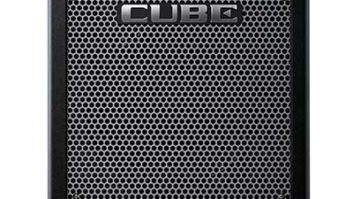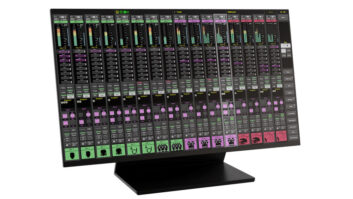Back in November, we looked at midrange tape formats. Big, fast and a bit spendy. I know that, for many of you, a thousand dollars is a serious chunk of your annual equipment budget. Still, you need to back up your stuff. But how, without breaking the bank?
As I’ve mentioned before, one of the cheapest ways to do the backup boogie is to use another disk. Head on over to Buy.com and do a quick search for “Home,” then “Computers,” then “Storage” and then “IDE Hard Drives.” At $200 a pop, 80GB IDE disks make a great container for disk-to-disk backups. This assumes that your computer can handle another drive. If not, then factor in the additional cost of a Host Bus Adapter (HBA) and the time needed to get the beast configured properly. You can also pick up a USB enclosure for an additional $100 and put those extra USB spigots to use. The potential downside of that solution is backup time, as USB 1.x is slow, slow, slow. While USB 2 and 1394 are quite speedy, in many cases, they might also require yet another expense in the form of a HBA.
One hidden liability of using additional disks as backup is all that extra disk space sitting there on your desktop, staring you in the face! Unless one possesses a steely, ninja-like will, one tends to use up every last byte of available space. Whoops, still no backup.
For slightly more moola, you can go to an offline solution that’s reasonably priced, long-lived, rugged and proven technology to boot. I’m talking about QIC, a most ancient tape format that may just fit your backup bill.
I know, in the past I’ve dissed quarter-inch tape, but that was before the current slow recovery. The word of the day is value, and QIC has that in spades. QIC is a venerable format originally based on a Quarter-Inch tape Cartridge, hence the name. In 1972, the tape wizards at 3M introduced the QIC linear format for storing info from telecommunications and data-acquisition applications. At the time, it competed with half-inch, open-reel tape, those things you always see spinning in the machine room in ’50s sci-fi movies.
In 1995, Imation launched improved QIC, or Travan technology, and Seagate partnered with them to develop drives based on this standard. The family has grown from its original 400MB QIC version to the current implementation, providing 10GB native capacity. Though based on and backward-compatible with QIC, Travan is an evolved version based on 0.315-inch tape. With compression, a Travan drive can do up to 85 Mbytes per minute, nothing too impressive, but hey, these things are cheap! Three hundred smackers will buy you an internal ATAPI mechanism and, for an extra $100, you can get a FireWire or USB external.
Unlike the DDS format against which it competes, Travan is a simple concept originally designed, from the ground up, for data storage. The cartridge is similar to a large, metal Philips cassette. The tape never leaves the cartridge and is only touched by the recording head. The stationary head in conjunction with a short, straight tape path means that the drive mechanism can be simple, with few motors and moving parts. Another advantage over DDS is the format’s incredibly long life. This puppy just won’t die, whereas DDS and ADR, another cost-conscious alternative, have no clear future.
Currently, there 12 to 15 million QIC drives in use, several times more than all other formats combined. Of those, 10 million are Travan. Last November, Seagate and 3M announced a new, seventh-generation iteration of the Travan platform scheduled to double the native capacity to 20 GB and boost the throughput to 120 Mbytes per minute.
While Seagate and 3M work their elves hard, the folks over at Exabyte haven’t been sitting around drinking frosty mugs of Oasis, at least not during business hours. They’re preparing the next generation of their value-oriented product, the VXA-2. Spec’d at 80GB native capacity with a 360Mbyte per minute throughput, OEMs are currently evaluating the SCSI mechanism for shipment later this year. These improvements come at an unexpected price, about the same as a VXA-1! Granted, this is a good bit more than a Travan drive, but, as with most things in life, you get what you pay for. To sweeten the deal, the cost of VXA media is coming down as well.
Whichever format you choose, there’s a flavor of tape for every taste and budget. And Travan, the long-lived value leader, is the clear choice for the cash-strapped fader jockey of today. So, if you’re still making excuses for your lack of a disaster-recovery strategy, then march yourself over to the nearest retailer and pick up a Travan.
OMas claims this column was written while under the classic influences of the Dave Brubeck Quartet’s Time Out and Delos’ hybrid SACD of Antonio Vivaldi’s The Four Seasons. For advice, links and back issues of “Bitstream,” visitwww.seneschal.net.
THE TLAS FOR THIS MONTH ARE…
DDS: I assume y’all know about DAT, and DDS is simply a DAT that’s been adapted for recording computer data rather than for audio.
ADR: ADR, or Advanced Digital Recording, is a modern data-tape format developed by Philips through their former subsidiary, OnStream. The company and its format have had a rough time since its inception. Headquartered in The Netherlands, OnStream Data B.V. is a new company, founded on May 1, 2001, by acquiring the intellectual property and other assets from OnStream Inc., after they ceased business on March 16, 2001. With so many choices in the tape-backup market, it’s anyone’s guess if ADR will provide a compelling value proposition. For more background on ADR, see “Bitstream,” August 2001.



